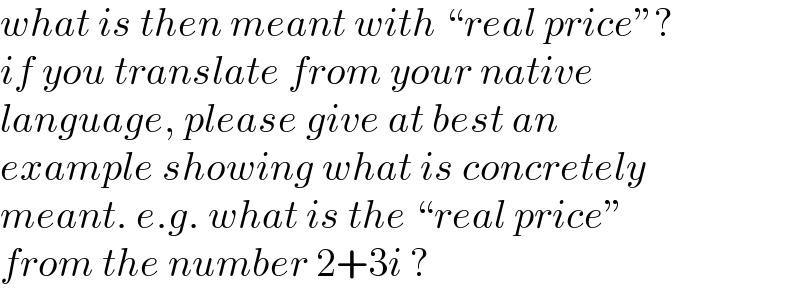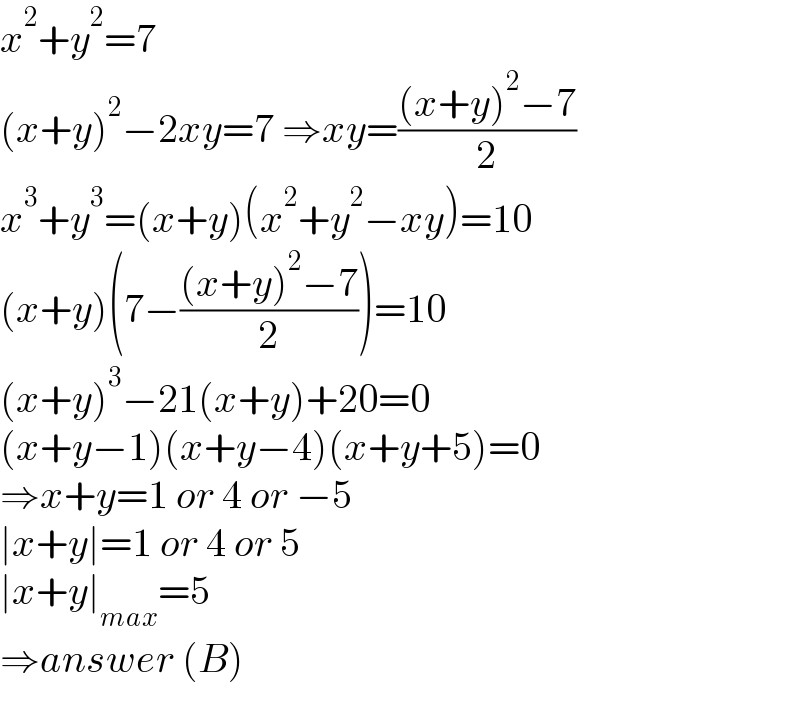
Question and Answers Forum
Question Number 184555 by Shrinava last updated on 08/Jan/23

Commented by mr W last updated on 08/Jan/23

Commented by Shrinava last updated on 08/Jan/23

Commented by mr W last updated on 08/Jan/23

Commented by mr W last updated on 08/Jan/23

Commented by JDamian last updated on 08/Jan/23
I think this kind of misunderstanding can be avoided by using more expressions in math language instead of long translated clauses from native languages
Commented by Shrinava last updated on 08/Jan/23

Answered by Frix last updated on 08/Jan/23
![We must solve in C (1) x^2 +y^2 =7 ⇒ y=±(√(7−x^2 )) (2) x^3 +y^3 =10 ⇔ x^3 ±(7−x^2 )^(3/2) =10 ⇒ ±(7−x^2 )^(3/2) =10−x^3 Squaring [might introduce false solutions] and transforming ⇒ x^6 −((21x^4 )/2)−10x^3 +((147x^2 )/2)−((243)/2)=0 I used software to find x=((1±(√(13)))/2)∨x=−(5/2)±((√(11))/2)i∨x=2±((√2)/2)i Testing leads to these pairs: x=((1±(√(13)))/2)∧y=((1∓(√(13)))/2) x=−(5/2)±((√(11))/2)i∧y=−(5/2)∓((√(11))/2)i x=2±((√2)/2)i∧y=2∓((√2)/2)i ⇒ x+y∈{−5, 1, 4}](Q184568.png)
Answered by Frix last updated on 08/Jan/23

Answered by mr W last updated on 08/Jan/23

Commented by Shrinava last updated on 09/Jan/23

Commented by mr W last updated on 09/Jan/23

